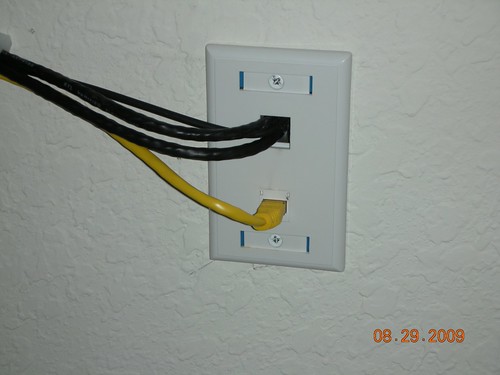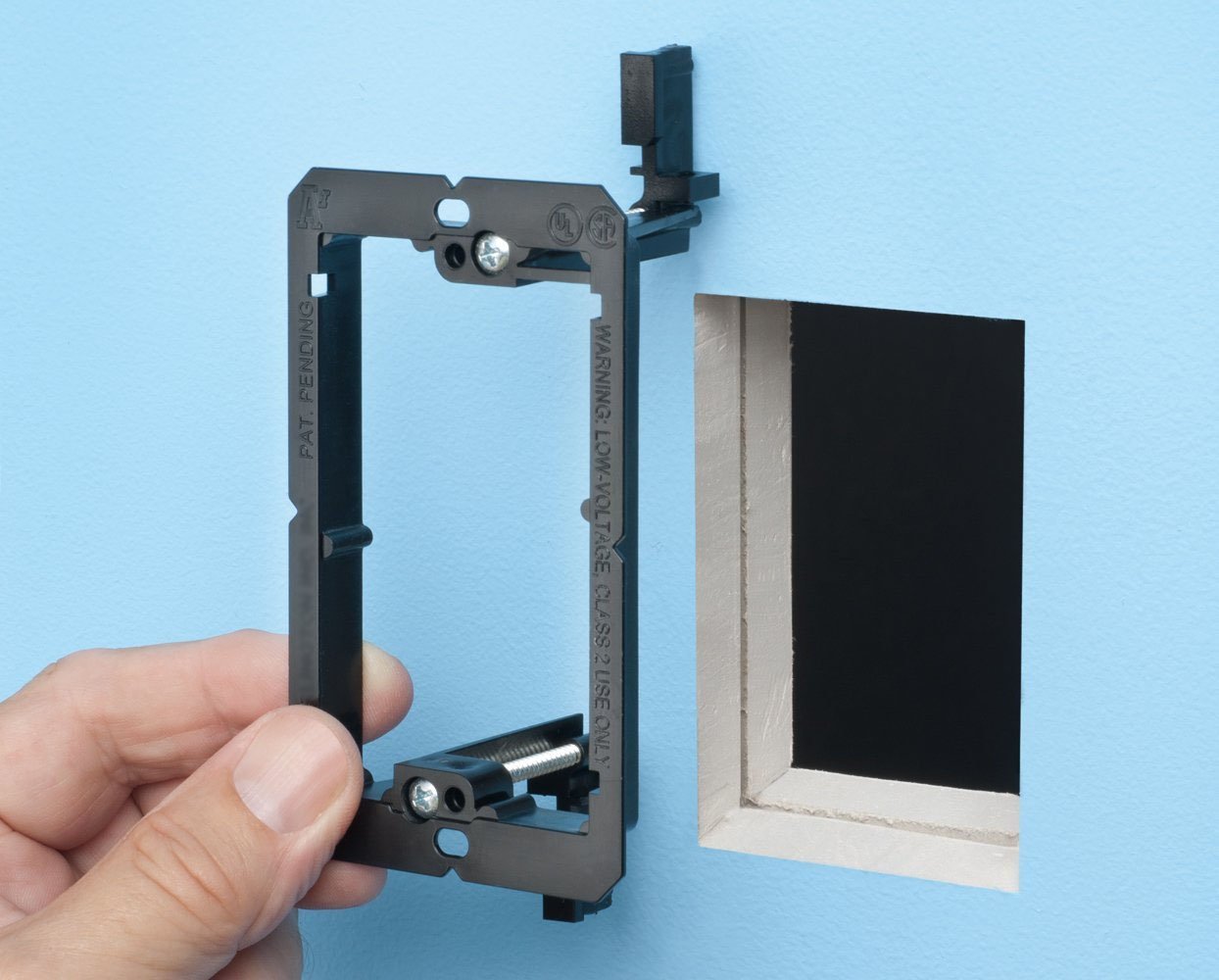I've been incrementally rolling out a whole-house-audio system. Few of the speakers and none of the control keypads are mounted in-wall. A few speakers are on-wall mounting.
For the most part, the speakers in the zones/rooms were existing and were using a 'poor-mans' WHA system via speaker selector switches, interconnected receiver/amps, etc. etc.
For most of the zone speaker wiring I fabricated wall-plates and use Neutrik speakON connectors. Most are four conductor and some are two conductor. Some of the wall-plates are based on keystone module plates to provide other connections such as CAT5/RJ45.
For one of the remaining zones, I would like to use a keystone module to provide a four conductor speaker termination. The speakON connectors use 14/4 cables. The keystone module termination would be 16/4 or maybe 18/4. The cabling for this zone needs to share the same conduit with a couple of CAT cables and I'd need room on the wall-plate... I can find keystone modules with one pair of 'push-in' type of speaker cables, That would mean that I'd need TWO keystone positions for the two speaker channels. I'm looking for a SINGLE keystone module with a four conductor connector that could handle an 18AWG (or-so) wire. There's a few 'miniature molex' type connectors that I think would fit in the keystone module footprint... So I'm thinking of ordering a few from Digikey in an attempt to DIY a module into a blank keystone module.
Does anyone have a better option? Granted that I could just bring the 16/4 or 18/4 cable out of the wall and terminate it on a cable-to-cable four position connector.... I was trying to be 'neat' about it. There ARE four position mini-DIN keystone modules that also go as S-video connectors. In fact I used one of these to terminate the control cable for an antenna rotor system. Problem is the wire size. It doesn't terminate easily on the mini-din-4 plugs.
Anyway, comments are welcome.
While I'm typing, one more question or topic for discussion: The keypad devices for my WHA installation are all desk-top/table-top. They are mounted in plastic single-gang PVC boxes. My plan is to fabricate some enclosures for the boxes to make them look better. Some fabricated from hardwood and finished for the 'nicer' rooms. And some fabricated from MDF and painted for the 'less nice' rooms. The keypad would be help at a 45 degree angle for better use.
I looked a bit and could NOT find an affordable, good looking enclosure for single-gang boxes. Using the boxes I did find, a couple of them would cost as much as an entire six zone matrix amp. They are targeted for the 'custom design' installations where money is no object. I'm frugal and would rather fabricate the boxes.
For the most part, the speakers in the zones/rooms were existing and were using a 'poor-mans' WHA system via speaker selector switches, interconnected receiver/amps, etc. etc.
For most of the zone speaker wiring I fabricated wall-plates and use Neutrik speakON connectors. Most are four conductor and some are two conductor. Some of the wall-plates are based on keystone module plates to provide other connections such as CAT5/RJ45.
For one of the remaining zones, I would like to use a keystone module to provide a four conductor speaker termination. The speakON connectors use 14/4 cables. The keystone module termination would be 16/4 or maybe 18/4. The cabling for this zone needs to share the same conduit with a couple of CAT cables and I'd need room on the wall-plate... I can find keystone modules with one pair of 'push-in' type of speaker cables, That would mean that I'd need TWO keystone positions for the two speaker channels. I'm looking for a SINGLE keystone module with a four conductor connector that could handle an 18AWG (or-so) wire. There's a few 'miniature molex' type connectors that I think would fit in the keystone module footprint... So I'm thinking of ordering a few from Digikey in an attempt to DIY a module into a blank keystone module.
Does anyone have a better option? Granted that I could just bring the 16/4 or 18/4 cable out of the wall and terminate it on a cable-to-cable four position connector.... I was trying to be 'neat' about it. There ARE four position mini-DIN keystone modules that also go as S-video connectors. In fact I used one of these to terminate the control cable for an antenna rotor system. Problem is the wire size. It doesn't terminate easily on the mini-din-4 plugs.
Anyway, comments are welcome.
While I'm typing, one more question or topic for discussion: The keypad devices for my WHA installation are all desk-top/table-top. They are mounted in plastic single-gang PVC boxes. My plan is to fabricate some enclosures for the boxes to make them look better. Some fabricated from hardwood and finished for the 'nicer' rooms. And some fabricated from MDF and painted for the 'less nice' rooms. The keypad would be help at a 45 degree angle for better use.
I looked a bit and could NOT find an affordable, good looking enclosure for single-gang boxes. Using the boxes I did find, a couple of them would cost as much as an entire six zone matrix amp. They are targeted for the 'custom design' installations where money is no object. I'm frugal and would rather fabricate the boxes.














